ATHENS
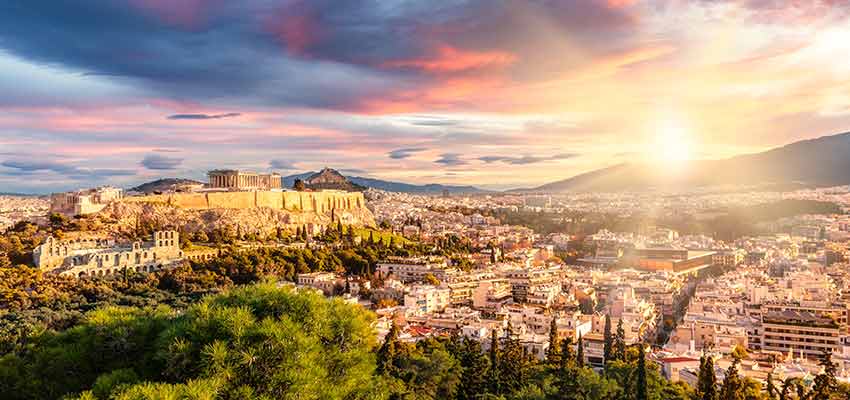
Athens, the capital of Greece, attained this status in 1834 during the reign of King Otto. At the time, it was a modest settlement with a population numbering around 10,000 inhabitants. In contemporary times, Athens, along with its surrounding region of Attica, has a population approaching approximately 3.8 million individuals. Kostis Palamas, a seminal figure in modern Greek poetry, evocatively described Athens as "the sapphire stone of the world's ring" in one of his works.
The name "Athens" is rooted in ancient Greek mythology and is attributed to the goddess Athena, who was venerated by the city's ancient inhabitants. According to legend, Athena bestowed upon the Athenians the gift of the olive tree, a symbol of peace and prosperity. During the period of Pericles, one of the most influential statesmen in ancient Athens, the Parthenon was constructed to honor Athena. This architectural marvel draws millions of tourists to Athens annually, serving as a testament to human ingenuity and artistic accomplishment.
ACROPOLIS

The term "Acropolis" derives from two Ancient Greek words: "Akro," meaning the highest or outermost point, and "Polis," signifying city. The Acropolis of Athens, perched atop a limestone rock with an elevation of 156 meters (512 feet) above sea level, stands as Greece's most iconic citadel. The site is largely inaccessible, encircled by cliffs on three sides, with only its western approach allowing entry. Archaeological evidence attests to human activity on the rock dating back to the Neolithic era. During the Mycenaean period (circa 1600-1100 BCE), the Acropolis was fortified with Pelasgian walls—massive barriers constructed from 6-meter (20-foot) wide slabs. Originally the city's epicenter and royal residence, it was encircled by the homes of nobility and served as a sanctuary in times of siege.
Over subsequent centuries, the Acropolis transitioned from a political and military hub to a spiritual locus, known as the "Sacred Rock," and became the site of numerous temples and religious structures. Notably, the temple of Athena Polias, constructed around 570 BCE, lay beneath what are now the Caryatid statues. The Persian invasion of 480 BCE resulted in widespread destruction, paving the way for a monumental rebuilding campaign spearheaded by the Athenian statesman Pericles from approximately 450-420 BCE. Artists and architects of the caliber of Phidias, Iktinos, and Kallikrates were commissioned to reconstruct and adorn the Sacred Rock. This era witnessed the construction of significant structures like the Propylaea, the Temple of Athena Nike, the Erechtheion with its renowned Caryatids, and the Parthenon—a Doric temple built in honor of Athena Parthenos and adorned with Pentelic marble. The Acropolis endured various transformations through the Roman period, the advent of Christianity, the Frankish rule, and the Ottoman era, during which it served alternatively as a church, a mosque, and even a gunpowder storehouse. Significant damage occurred during Venetian sieges in 1656 and 1687. The Acropolis was returned to Greek control in 1833, leading to ongoing efforts in excavation and conservation.
PANATHENAIC STADIUM
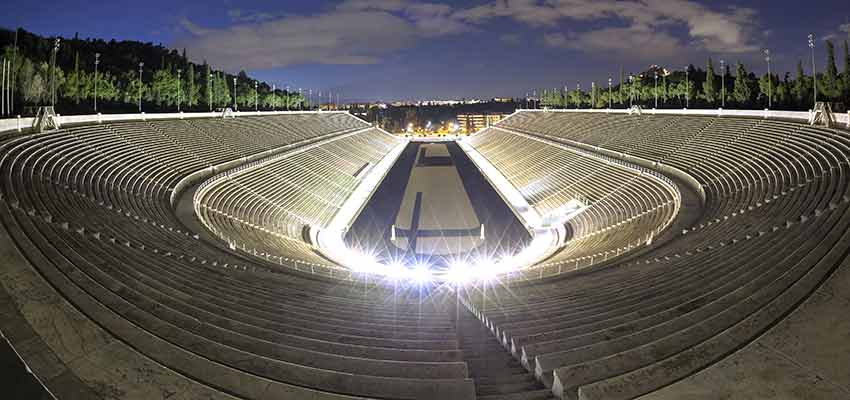
The Panathenaic Stadium, also known as Kallimarmaro, is located on the precise grounds of its ancient predecessor, constructed in 330 BCE. Fashioned from white Pentelic marble, the stadium measures 204 meters (669 feet) in length and 83 meters (272 feet) in width, with a seating capacity for approximately 60,000 spectators. The venue underwent its first significant renovation during the reign of the Roman Emperor Hadrian, between 76 and 138 CE. A more substantial reconstruction in white marble was carried out by Herodes Atticus in 144 CE, specifically for the Panathenaic Games.
Between 1869 and 1879, the site was excavated by German architect Ernst Ziller. Preceding the inaugural modern Olympic Games on April 5, 1896, philanthropist George Averof donated 4 million drachmas in gold—roughly equivalent to $15,000 at that time—for the stadium's refurbishment. The current architectural form of the Panathenaic Stadium faithfully replicates the design implemented by Herodes Atticus in 144 CE.
MOUNT LYCABETTUS
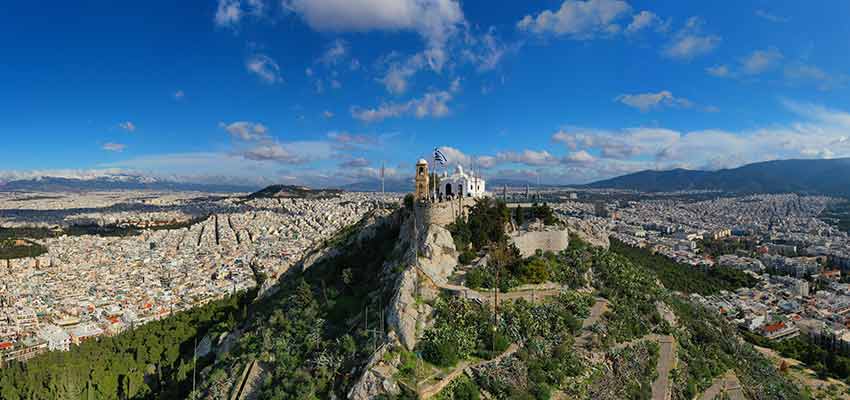
Mount Lycabettus constitutes a prominent limestone formation situated at the heart of Athens, Greece. In antiquity, this geological feature lay beyond the fortified boundaries of the city. The mount boasts a conical profile and elevates to a peak height of 277 meters (908 feet). The etymology of the name "Lycabettus" is subject to various interpretations, ranging from associations with the dawn's early light to its historical function as an observation point for celestial events by ancient Athenians.
On the hill's western flank, historical records suggest the presence of a water reservoir that served as a supply source for the Athenian populace. The summit today is adorned with a 19th-century whitewashed chapel dedicated to St. George. In addition, the mount houses dining establishments and the Lycabettus Theater, a venue frequented by a global array of artists representing diverse musical and dance genres.
PHILOPAPPOS HILL
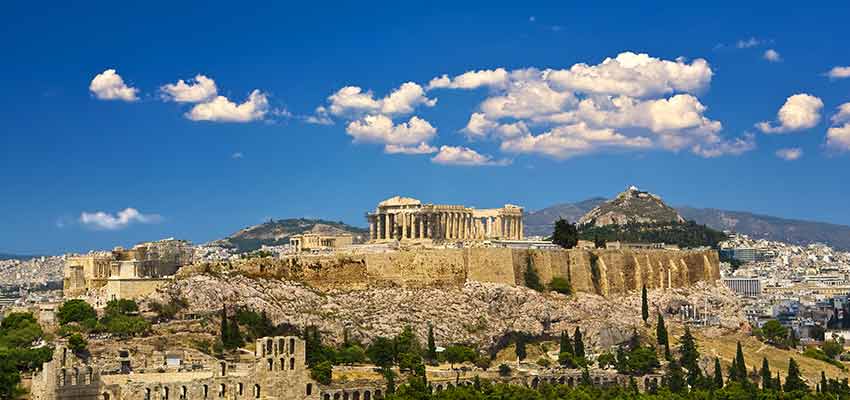
Philopappos Hill, with an elevation reaching 147 meters (482 feet), stands as the most elevated point in the southern expanse of Athens, Greece. The summit affords panoramic vistas of the iconic Acropolis, enriching the hill's allure for both residents and visitors. The etymology of "Philopappos" traces back to a monument erected circa 115 A.D., dedicated to Caius Julius Antiochus Philopappos, a Roman prince. This enduring architectural tribute lends the hill its name and adds to its historical significance.
PRESIDENTIAL MANSION
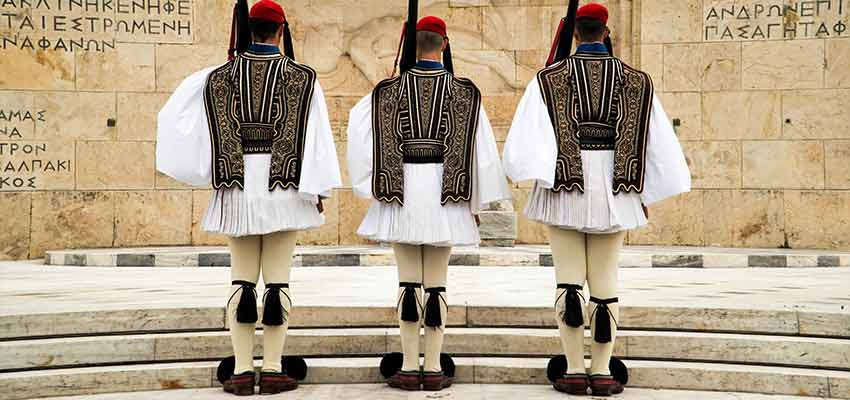
The Presidential Mansion, an edifice of historical and architectural import in Athens, was constructed in 1878 under the supervision of German architect Ernst Ziller. Initially serving as a royal residence, it housed the Greek Royal Family from 1890 until the dissolution of the monarchy in 1973. Contrary to the assertion that the building has been the seat of the Greek Parliament since 1935, it actually never served in that capacity; that role belongs to the Hellenic Parliament Building. Following the termination of the monarchy, the mansion was repurposed as the official residence for the Prime Minister of Greece.
CAPE SOUNION
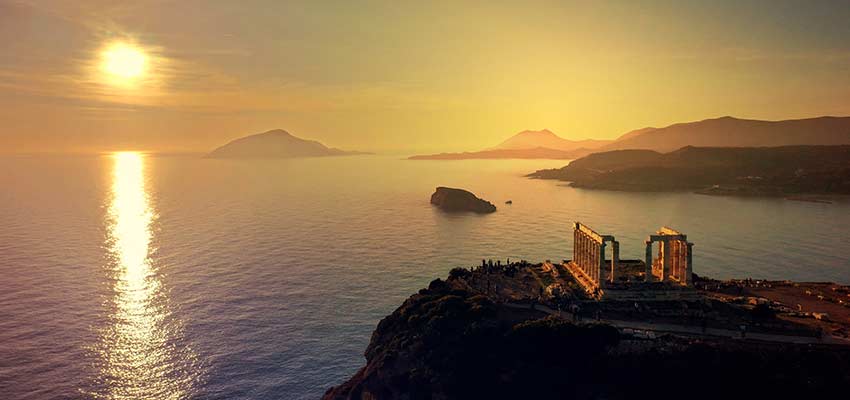
In antiquity, Sounion served as a crucial municipality in the Attica region, distinguished by its fortified cape that facilitated navigational control for ships. The cape's fortifications were among five key strongholds safeguarding Attica. While the cape was likely fortified from an early period due to its strategic naval importance for the Athenians, specific documentation indicates the presence of fortifications in the winter of 413-412 B.C. During this period, wealthy merchants and seafarers reportedly dedicated approximately 10 to 12 oversized marble kouroi to the sanctuary, providing an imposing spectacle for passing seamen. Some of these statues have been preserved and are currently displayed in the National Archaeological Museum of Athens.
Two significant sanctuaries dedicated to Poseidon and Athena Sounias further enhanced the importance of Sounion. A temple initiated after 500 B.C. was severely damaged in a raid by the Persians. Subsequently, in the mid-5th century B.C., under the aegis of the Athenian statesman Pericles, construction commenced on the classical Temple of Poseidon. This Doric-style edifice featured a 6x13 column arrangement and included a double internal colonnade, which housed the statue of the deity.
PLAKA
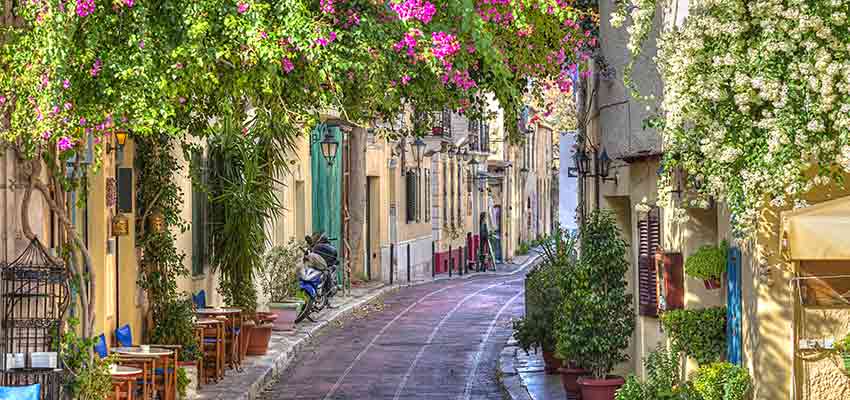
Situated on the north and northeast slopes of the Acropolis, Plaka stands as Athens' most ancient and visually arresting neighborhood. Locally revered as "the neighborhoods of the gods," Plaka owes its name to a sizable white plaque formerly positioned at the confluence of Thespidos, Adrianou, and Tripodon Streets. In antiquity, this fortified district served as the locus of the ancient Athenian agora, or marketplace, established circa the 8th century BC—a model of civic design emulated by various other city-states of ancient Greece.
Architecturally, Plaka's buildings offer a palimpsest of historical periods: Classical, Roman, Byzantine, and Ottoman structures collectively chronicle the evolution of Athens. Monuments of particular note encompass the classical Agora, the Doric Temple of Hephaestus and Athena, and the Roman Forum—also known as the marketplace of Caesar and Augustus. This forum was accessible via two main entrances: the majestic westward gate dedicated to Athena, and an eastern entry for pedestrians. Adjacent to the latter stands the Tower of the Winds, a historical timekeeping monument.
Noteworthy, too, are the remnants of Hadrian's Library, once a grand repository of knowledge in the ancient world. The Stoa of Attalos and the Choragic Monument of Lysicrates, constructed by Lysicrates himself as a patron of the annual Dionysian music competition, further contribute to Plaka's rich architectural heritage. A plethora of churches, including the Metropolitan Cathedral of Athens and the Church of Soteira Lykodimou, are interspersed throughout the district.
Beyond its physical monuments, Plaka houses an impressive range of cultural repositories. More than 10 museums are situated in the area, such as the Museum of Modern Greek Culture, which specializes in traditional handicrafts; the Kanellopoulos Museum, featuring artifacts from the Prehistoric era to the 19th century; and the Jewish Museum of Greece, which delves into the religious and quotidian life of Greece's Jewish communities.
A hub for gastronomy and nightlife, Plaka is credited with originating the Athenian 'serenade.' It also serves as a festive ground for the city's annual carnival celebrations. The neighborhood's unique blend of the historical and the contemporary renders it a microcosm of Athens itself, encapsulating the city's extensive chronicle of cultural development.